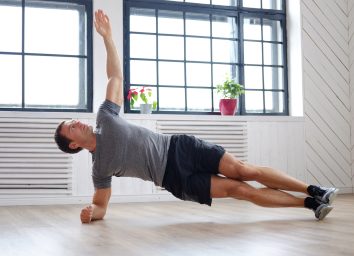One Secret Side Effect of Stretching More, Says Doctor
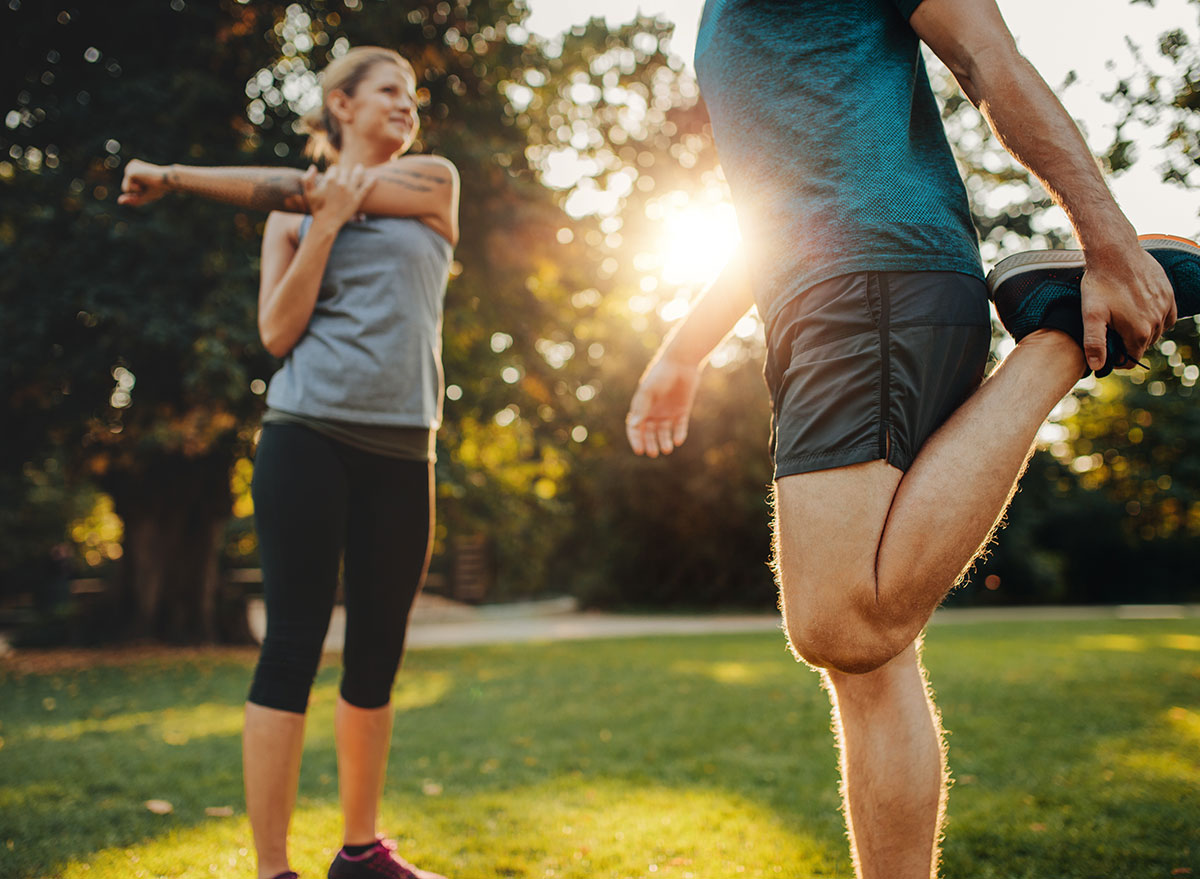
Though exercise scientists will tell you that it's a bad idea to do perform static stretches right before rigorous exercise, the benefits of stretching more every day are undeniable. On a physical level, stretching helps blood flow, reduces your risk of injury, increases your range of motion, helps you achieve better balance, assists your body in relieving itself of inflammatory lactic acids (which create soreness and stiffness), and ultimately helps you lose weight. What's more, a recent study published in the Journal of Physical Activity and Health found that stretching is terrific at lowering your blood pressure.
But the mental health benefits are also impressive. Yes, as millions of devoted yoga practitioners across the world know all too well, yoga is an amazing stress reliever. "Even without formal meditation and controlled breathing, the gentle muscle stretching of yoga can reduce stress," write the experts at Harvard Medical School. "Stressed muscles are tight, tense muscles. By learning to relax your muscles, you will be able to use your body to dissipate stress."
There's more. According to one noted psychiatrist, there's yet another positive side effect associated with stretching that you should be aware of—and trust us, it's not anything that you're expecting. Read on to learn what it is. And for more on the benefits of stretching, don't miss the Ugly Side Effects of Not Stretching After Exercise, According to Science.
Stretching Helps You Listen Better and Connect with Others
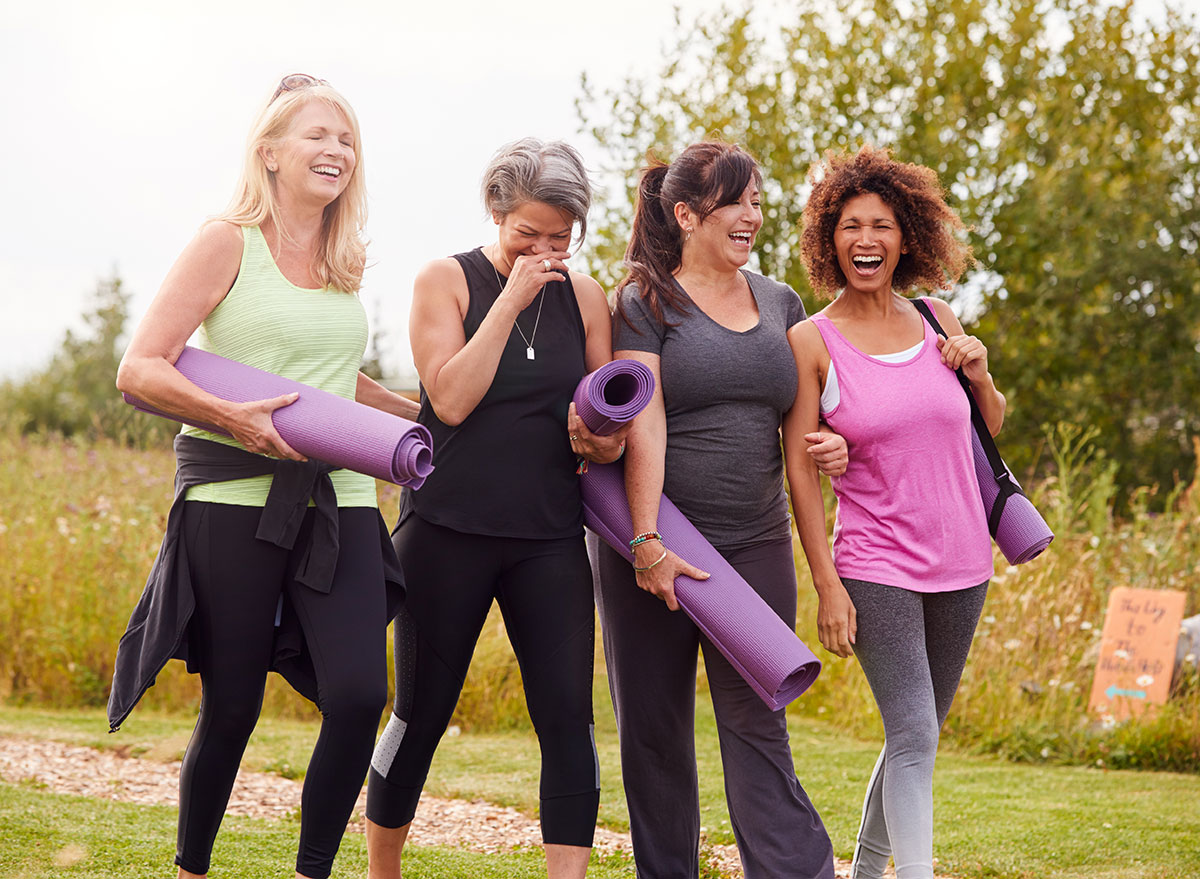
According to the American Psychological Association, "attunement" is defined as the "emotional synchrony" that exists between a child and a parent or caregiver. "The parent's response can take the form of mirroring (e.g., returning an infant's smile) or be cross-modal (e.g., a vocal response 'uh oh' to the infant's dropping cereal on the floor)," the definition reads. "Attunement communicates to the infant that the parent can understand and share the infant's feelings."
In other words, it's the act of a parent being "attuned" to a child, of connecting with them. And according to Edward S. Brodkin, M.D., an Associate Professor of Psychiatry with tenure at the Perelman School of Medicine at the University of Pennsylvania, attunement can also exist between two people—not just family.
"[Attunement is] to be aware of our own state of mind and body while also tuning in and connecting to another person," he writes in his new book, Missing Each Other: How To Cultivate Meaningful Connections (which was recently excerpted by MindBodyGreen). And for more on the benefits of loosening up, see here for The Side Side Effect of Stretching Before Breakfast, Say Experts.
Stretching Enhances Attunement
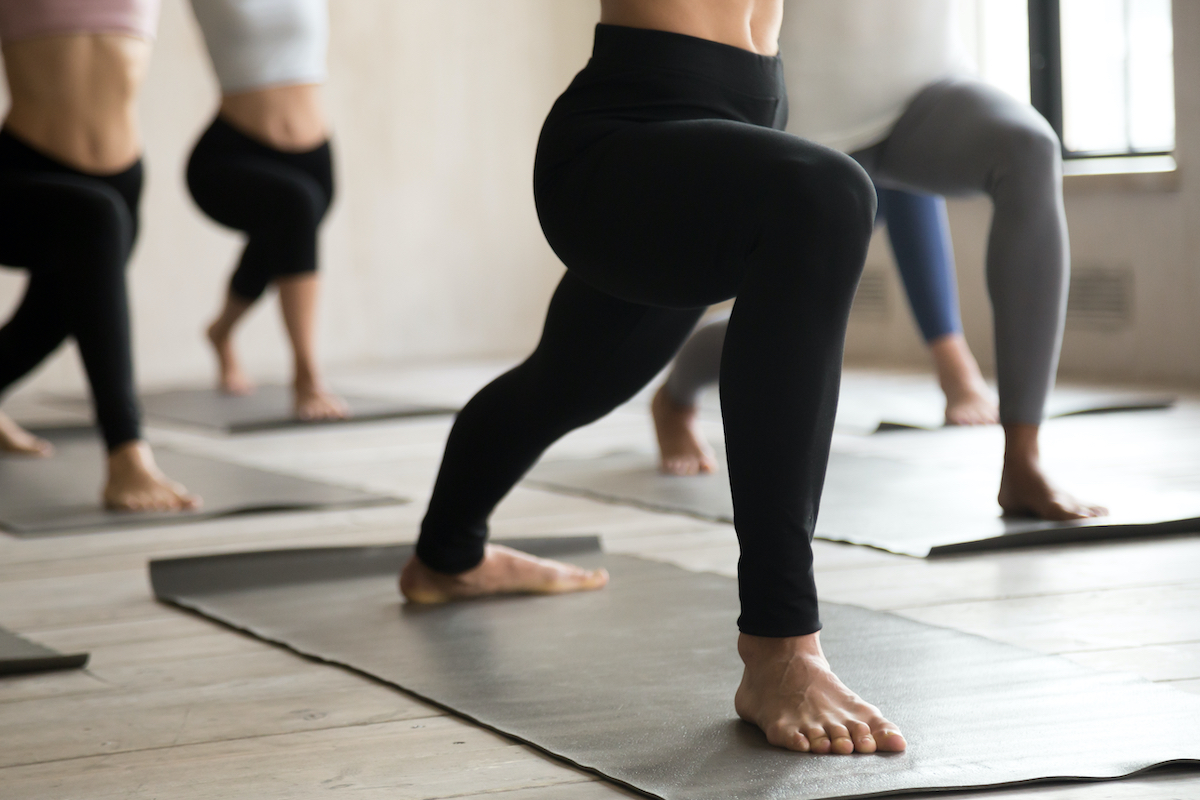
According to Brodkin, carrying tension in your body "leads to a misalignment that can interfere with our ability to tune in to ourselves or others." "The tension can stem from too much time sitting at the computer or using our smartphones, or it can develop from years of chronic stress and trauma that infiltrate our lives to varying degrees," he writes.
He argues that stretching more and correcting your posture, alignment, and balance will help you actually develop attunement—and improve your ability to connect with other people.
One exercise he recommends for "tuning into" others is tai chi, which emphasizes "loosening up areas of the body that tend to get tense in our daily lives, especially the neck, shoulders, back, and hamstrings." (If you do tai chi, know that it's not just a great way to improve balance, posture, and mobility; a new study published in Annals of Internal Medicine found it's a remarkable way to reduce belly fat in your over-50 years.)
Stretch These Body Parts
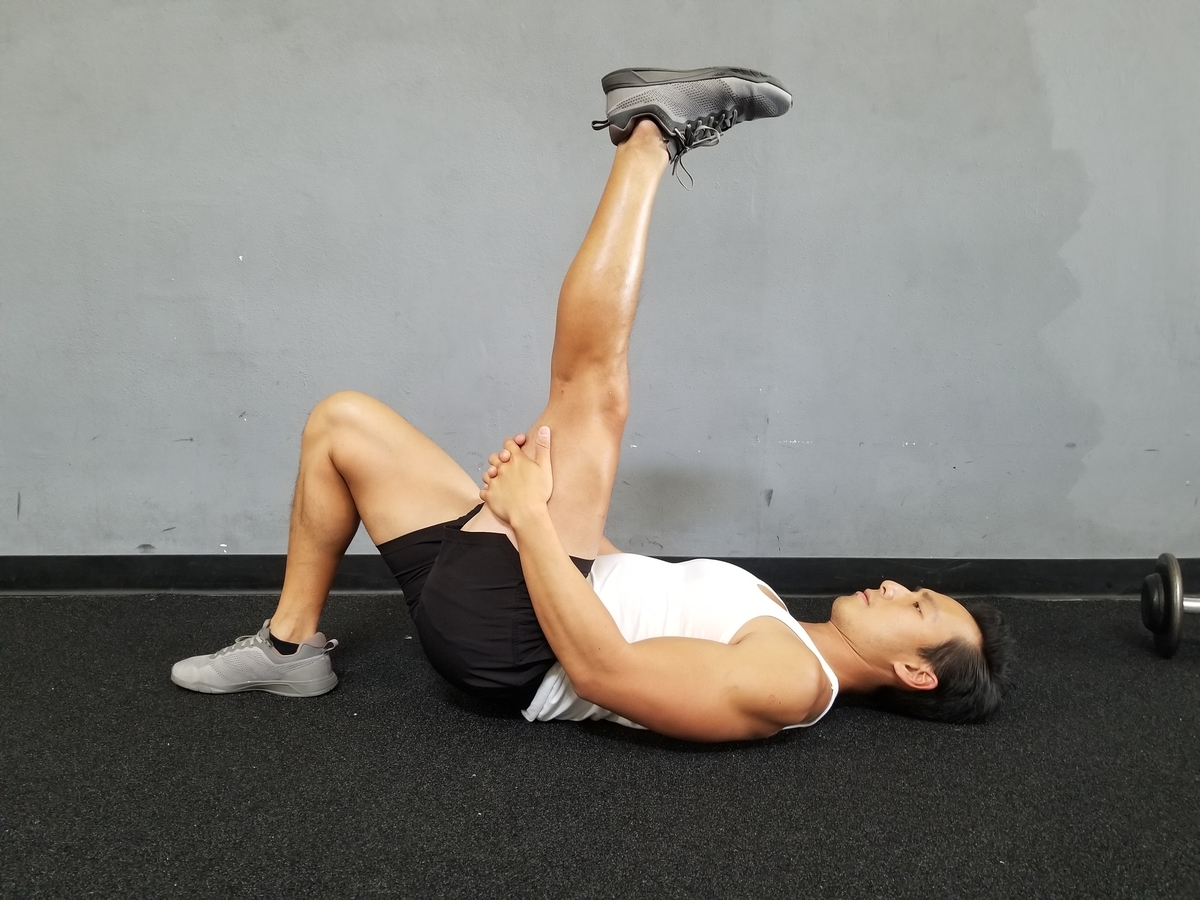
Brodkin advises you to stretch your neck, shoulders, waist, hips, back, and hamstrings—and provides some video instruction for the stretches on his official site. But for some amazing stretches that utilize all of those areas, check out The 5 Yoga Stretches Everyone Over 40 Should Do.
